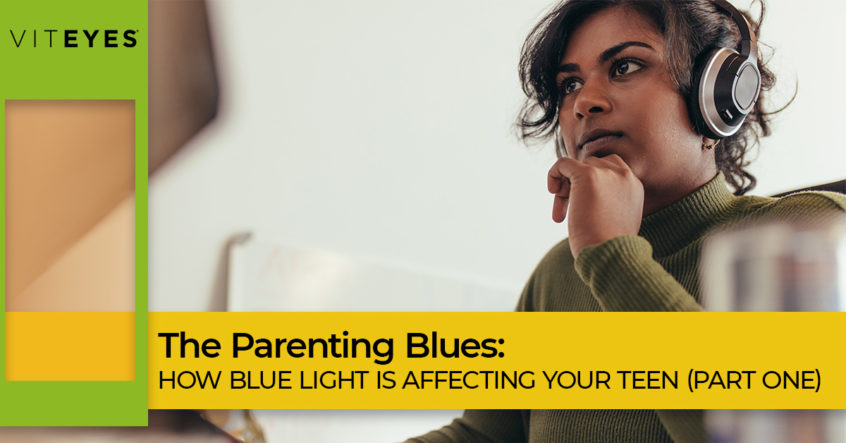We’re only beginning to see the impact of how blue light is affecting our health!
We’ve encountered an age and new generation where kids are navigating a world where the internet has always existed and technological devices are at an arm’s length. They’ll likely never understand setting an alarm that isn’t on their phone, nor the analog delight of vinyl music.
Growing up digital is not changing, but there have been many implications of how it’s impacting not only our vision but our health. What then, does this mean for our kids?
At Viteyes, we understand the importance of limiting blue light, not only for healthy eyes but for optimum health. Follow along in today’s post as we explore how blue light is impacting our kid’s and teen’s eye health as a part of Children’s Eye Health and Safety month.

What is Blue Light?
Your kids are exposed to blue light from running and playing outdoors in the fresh air, to every time they flip on a digital device. The truth is, light is more complex than we make it. It contains a variety of visible rays with different amounts of energy, that ultimately impact our health.
Sunlight, what we know as white light, contains a broad range of colors including blue, red, orange, yellow, and green. Each color has a light energy associated with it, blue light having the highest energy of all the visible light.
The important factors to note about blue light are as follows:
Blue light is abundant – Sunlight is a major source of blue light, as are man-made sources such as LED lights, televisions, and screens on electronic devices.
The eyes have a difficult time blocking blue light – It’s important to note that the cornea does a great job of blocking most of your UV exposure, however, blue light has the ability to penetrate the cornea and lens to reach the macula.
Blue light isn’t always bad – It would be a disservice to block blue light 100% of the time because it does have its benefits. Research has found that blue light plays a role in mood elevation, alertness, and memory and cognition. It also helps our circadian rhythm to regulate periods of wakefulness, which is why too much of it at night can disrupt our sleep.
Blue light can contribute to eye strain – We know that blue light can impact the macula within our eye, but too much blue light can also cause digital eye strain. Blue light is high-energy and it scatters across digital devices, making it hard for our eyes to focus. Increased and prolonged use of screens causes a lot of disruptions to our eyes, causing them to fatigue.
Blue light doesn’t just penetrate our eyes, it penetrates the retina and the macula that is at the back of your eye. Studies are beginning to show that too much blue light may deteriorate light-sensitive cells in the eyes, leading to an increase of age-related vision problems..
Blue Light Exposure And Your Teen
Why should we be worried about our exposure to blue light? The main concern for today’s teens and teens in the future is that they are consuming technology at a much higher rate than — they’re constantly connected.
It’s difficult, too, for parents to monitor how they use devices. You may set ground rules at home, but at school they’re likely using computers most of the day and when they’re not on computers, they’re on their phones or tablets. There is just a constant saturation of blue light, and it’s impacting their health.
It’s also important to mention that most kids don’t have the awareness of what blue light is or are interested in managing their exposure to it! Adults know how to limit screen time or can wear blue light blocking glasses at work, but ultimately, kids just want to be kids so it’s important as caregivers to help support them in this way!
We’ve explored what blue light is and why it’s even more impactful to kids, but the conversation doesn’t stop here! Continue the blue light dialogue in part two of this series.
